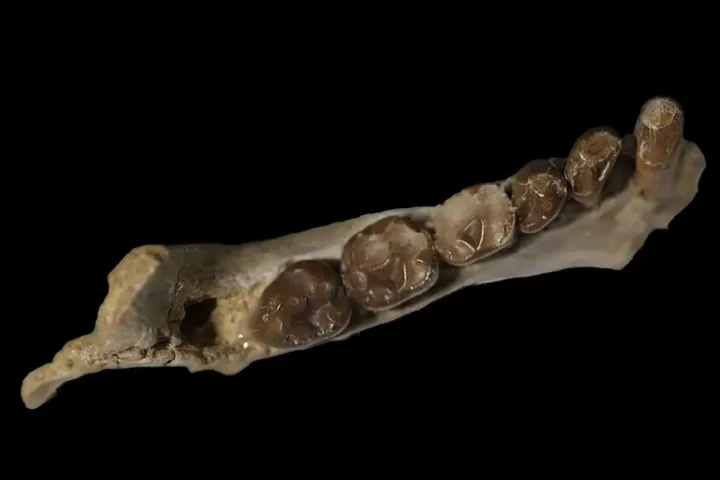Analysis of fossils from Canada’s Ellesmere Island shows that primates reached the Arctic at a time when the climate was warmer.
Tree-dwelling relatives of primates lived 52 million years ago in swampy forests in the Arctic, where the climate was about 13°C warmer than today.
About 52 million years ago, when the Arctic was warm and swampy, shrouded in six months of darkness during the polar winter, two small primates scurried around, using their powerful jaw muscles to chew the tough vegetation that survived the bleak Arctic.
The newly identified primates, belonging to the already known primate genus Ignacius and given the new species names Ignacius dawsonae and Ignacius mckennai, were small and weighed about 2kg each. According to the study published in the journal PLOS One, these were the oldest known examples of primates living in the Arctic.
The findings are based on analyses of fossilised jaws and teeth found on Ellesmere Island in northern Canada. Located north of Baffin Bay, the island lies just south of the Arctic Ocean, which is as far north as you can get from Canada.
“If you think about the modern relatives of these animals, primates or flying lemurs, these are among the most tropically adapted of all mammals, warm-weather lovers,” said Christopher Beard, a vertebrate palaeontologist at the University of Kansas and senior author of the study. So they would be the last mammals you would expect to see north of the Arctic Circle.”
These two species lived during the Eocene epoch (56 million to 33.9 million years ago), a period of intense planetary warming. According to Kristen Miller, first author of the study, there was no polar ice cap at the time, and Ellesmere Island would have had a hot and muggy climate similar to that of Savannah, Georgia, today.
In fact, according to earlier palaeontological discoveries, temperatures on Ellesmere Island were hospitable enough to accommodate a diverse ecosystem of unexpected animals, including early tapir-like ungulates and even crocodiles, snakes and salamanders.
Although the Arctic inhabitants of the Eocene did not have to deal with extreme temperatures, life in the warm Arctic was not without its challenges. Due to the tilt of the Earth’s axis, the sun does not rise on the island for half the year. “There are six months of winter darkness and six months of summer light,” says Miller.
Until now, the main challenge for animals living in the north was the lack of food. Under such conditions, vegetation is likely to be scarce during the long, dark winters. The researchers therefore hypothesise that Arctic animals in the genus Ignaceous probably lived on hard-to-chew food, such as seeds or tree bark.
To be able to eat such difficult foods, the researchers found that, compared to their more southern relatives, Arctic primates had cheekbones that protruded further out from their skulls, which probably meant that their jaw muscles did the same.
“The mechanical consequence of moving these masticatory muscles forwards is to be able to generate larger bite forces,” says Beard.
Adaptations in northern latitudes don’t end with the jaw. The animals were also much larger than their southern relatives. “Two kilograms doesn’t sound like a lot, but compared to the ancestors of these animals, it’s huge,” Beard said. The close relatives of these animals we found in Wyoming are the size of squirrels.”
Their relatively large size was expected. In general, there is a general trend in ecology called Bergmann’s rule, which states that the further away from the equator animals live, the larger they tend to be. Size is a common adaptation to lower temperatures, and yes, for an animal species typically found in the tropics, the climate of today’s coastal Georgia would have been quite cold, and a large size would have been required to minimise heat loss.
Eocene warming allowed many species to shift their range northwards. This is a trend that ecologists now recognise among modern species due to human-induced climate change. As the planet warms, more species are likely to start living in the Arctic, but many of the species will not simply start living there, as in the case of Ignacius, they may differentiate into new species there.
“Given some time, species will evolve their own distinctive features that will adapt even better to the Arctic,” Beard said. I think this is a real and dynamic picture of what will happen in the Arctic in the future with anthropogenic warming.”
source: Miller, K., Tietjen, K., & Beard, K. C. (2023). Basal Primatomorpha colonized Ellesmere Island (Arctic Canada) during the hyperthermal conditions of the early Eocene climatic optimum. Plos one, 18(1), e0280114.





